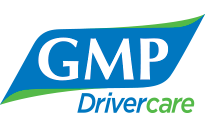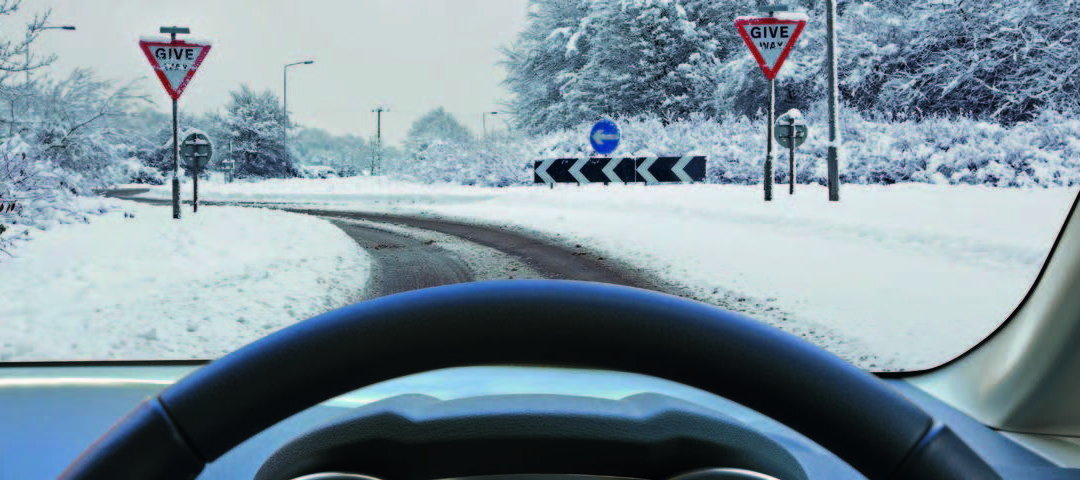WINTER DRIVING
GMP PROVIDES THEIR TOP FIVE TIPS TO KEEP YOU SAFE
ON THE ROAD DURING BAD WEATHER
GMP Drivercare has put a series of top tips together to help you prepare for different weather conditions – when a single journey may take us into very different weather, road and traffic conditions.
In very bad conditions, its a good idea to avoid driving completely, unless you absolutely have to make the journey and driving is the only option. For many people who work in the NHS and emergency services, this simply isn’t an option when the general public relies on you to turn up to work. However, most drivers do experience difficulty when roads are affected by severe flooding or snow, so take some time to consider how it affects your driving and factor in additional time.
1) PREPARE YOUR VEHICLE
It’s a good idea to have your vehicle fully
serviced before winter starts and have the
anti-freeze checked. You should ensure that:
- The lights are clean and working
- The battery is fully charged
- Windows and wiper blades are clean and the washer bottle filled with screen wash
- Tyre condition, tread depth and pressure are all correct
- The brakes are working well
- All fluids are kept topped up
- Check your windscreen for chips/ cracks
2) EMERGENCY KIT
When extreme weather is likely it’s a good idea to keep some additional items in the car for emergencies in addition to your GMP accident management kit. This could include:
- A shovel and a piece of old carpet/mat
- Sturdy Boots
- De-icing equipment
- A working torch
- A car blanket and warm coat
- Emergency food and drink
- Mobile Phone (fully charged)
3 PREPARE YOUR JOURNEY
Listen to local/national weather broadcasts and travel bulletins. Conditions can change quickly so check them regularly and be prepared to change your plans if conditions worsen. Avoid making your journey unless it is absolutely necessary but if you decide you must travel:
- Let someone know where you are going and what time you hope to arrive.
- Plan alternative routes in case your main choice becomes impassable.
- Keep your fuel tank near to full to ensure that you do not run out.
- Make sure you have a fully charged mobile phone, so you can call for help.
- Clear your windows and mirrors completely of snow and ice before you set off.
4) SNOW & ICE
Most of us have very little experience of driving in extreme conditions, such as snow, so take some time to consider how it affects your driving and adapt your driving style to suit the changing conditions:
- Reduce your speed.
- Only travel at a speed at which you can stop within the distance you can see to be clear.
- Avoid harsh braking and acceleration, or sharp steering.
- Always reduce your speed smoothly and in plenty of time on slippery surfaces.
- Slow down in plenty of time before bends and corners.
- Braking on an icy or snow covered bend is extremely dangerous. The centrifugal force will continue to pull you outwards and the wheels will not grip very well. This could cause your vehicle to spin.
- To brake on ice and snow get into a low gear earlier than normal, allow your speed to fall and use your brakes gently.
- Increase the gap between you and the vehicle in front. You may need up to TEN TIMES the normal distance for braking.
- In snow, stop frequently to clean the windows, wheel arches, lights and number plates.
- Use dipped headlights.
5) FLOODS & STANDING WATER
Driving in wet conditions can be hazardous. Standing water creates a potential aquaplaning hazard as well as reducing visibility, so if your steering does become unresponsive, ease off the accelerator and slow down gradually. Only attempt to drive through flood water if you know it’s not too deep. Do not drive through water that is moving or more than 10cm (4 inches) deep as it could cause substantial damage to your vehicle. The air intake on many cars is low down at the front and just an egg cupful of water in the combustion chamber is enough to damage an engine. Allow oncoming traffic to pass first and drive slowly and steadily to avoid creating a bow wave.
Test your brakes as soon as you can after leaving the water.
N.B. Drivers who damage leased vehicles as a result of driving through floods will be liable for the repair costs. For further information or read more visit: http://www.driverlinkmagazine.co.uk/



